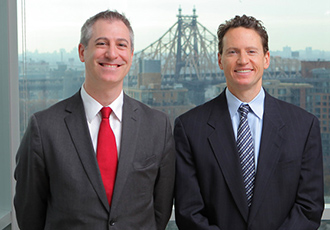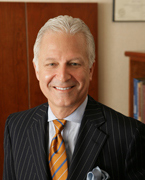
The Skull Base Surgery Program at Weill Cornell Medicine Neurological Surgery brings together the expertise of neurological surgeons, otolaryngologists (ENT specialists), plastic surgeons, neurologists, neurological oncologists, radiation oncologists, and intensive care nursing staff in the comprehensive treatment of disorders of the skull base. The skull base, which is the complex region at the floor of the cranial cavity, is a challenging location for surgery because of its proximity to the brain, face, and neck. Fortunately, advances in microsurgical techniques and high-quality imaging have greatly improved the prognosis for skull base disorders.
Anatomy of the Skull Base
The skull base is a complex irregular bone surface on which the brain rests. Contained within this region are major blood vessels that supply the brain with essential nutrients and important nerves with their exiting pathways. The floor of the skull is divided into three regions from front to back: the anterior, the middle, and the posterior compartments.

Neurosurgeon-in-Chief Philip Stieg specializes in cerebrovascular disorders and tumors of the skull base.
The roof of the skull base is composed of the brain itself and a thick sheet of tissue on which the brain rests, called the tentorium.
Adding to the complexity of the region is the fact that each compartment of the skull base is at a different level. The anterior compartment is highest and the posterior compartment lowest.
Skull Base Disorders
A wide variety of tumors may occur within the skull base, including tumors that arise from the brain, the lining of the brain, the bones of the skull base, or the pituitary gland. The skull base may also develop metastatic tumors that originate from cancers elsewhere in the body.
Aneurysms may also occur in the skull base and require the specialized expertise of the Skull Base Program for successful repair. An aneurysm is an abnormality of the blood vessels, and the skull base is rich with arteries and veins, including the internal carotid artery, ophthalmic artery, basilar arteries, and the cavernous venous sinus.
Why the Weill Cornell Skull Base Surgery Program?
Due to the complexity of skull base surgery, the procedures are best performed at major medical centers with the resources and expertise to manage serious disorders both during and after surgery. The Skull Base Surgery Program at Weill Cornell Medicine Neurological Surgery offers not only the expertise of its highly trained neurosurgeons but also the facilities of one of the top hospitals in New York, NewYork-Presbyterian Hospital.